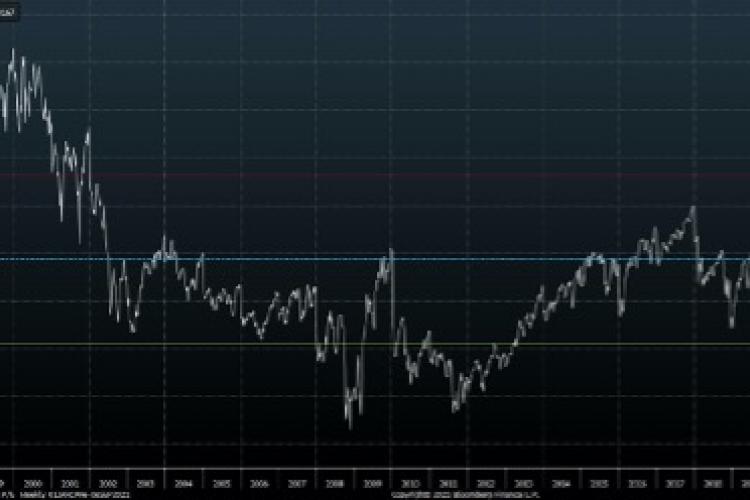Since the development of the Covid vaccines, we have taken a constructive view on equities. While equity valuations were high, they were justified by an expected recovery in earnings. With the second quarter earnings season behind us, have we been justified in our views? More importantly, has the recovery in earnings been sufficient to moderate the high valuations?
Second quarter earnings for S&P 500 companies showed a bumper quarter for US companies. Whilst earnings and sales growth were very strong for the quarter, it is important to note that they benefited from favourable base effects. The second quarter of 2020 was when companies reported the worst effects of the initial wave of Covid-19 and the associated restrictions that came with it. In aggregate, companies reported around a 96% increase in earnings when compared to this time last year. They also reported around 26% in top-line revenue growth.
All the underlying sectors of the index posted significant gains in earnings and revenue, with Consumer discretionary, Industrials and Financials leading. Industrials, which were badly affected during the initial shutdowns have recovered sharply: 97% of the 69 companies reported positive earnings growth. Utilities, Real Estate and Consumer Staples had relatively more modest earnings growth on aggregate, with a higher proportion of the underlying companies in the sector still reporting losses.
Earnings are growing at a rate far above the long-term trend. This is what is to be expected in the aftermath of recessions. However, the speed of this recovery and the extent at which earnings are outpacing the long-term trend is unprecedented. It took only two quarters for corporate earnings to catch up to the pre-pandemic long term growth trend and they are currently growing 18% above trend. These growth levels are high, even if we exclude the impact of Covid, by comparing to 2019 earnings levels, annualising a growth rate of 15% over two years.
Sequentially, earnings are growing at a very strong 4.7% compared to the first quarter. Cyclicals are the main driver, growing earnings by around 14% over the first quarter. This is remarkable when you consider that the average annual growth in earnings is around 6.5%.
Coming into this earnings season, consensus estimates for earnings were raised significantly. Despite this, earnings beats have been strong for the fifth quarter in a row. Not only is the size of the beats large in aggregate for the US (15%), but the breadth of beats is running at record levels - with more than 87% of companies in the index beating consensus. In addition to earnings beats, revenue surprises are near record levels as well.
With such torrid GDP growth rates, and positive surprises over already optimistic forecasts, it is clear that the recovery from Covid alone cannot fully explain recent earnings numbers. Other factors are at play. We think two factors played an important role. First, consumers during Covid built up extraordinary levels of savings, in part because of the lack of spending opportunities, and in part because of government financial support. It is difficult to anticipate consumer behaviour after such an unusual financial event. Second, public sector spending remains at much higher levels than during more normal economic environments. Both factors, however, are transitory. Excess savings are being depleted, and public sector spending as a share of GDP is expected to start declining in the months ahead.
Looking ahead, the outlook for earnings and the market is getting more complex. Despite the market performing well during the reporting season, companies that beat consensus didn’t outperform the total market. This could be due to elevated valuation multiples coming into the reporting season.
Elevated valuation multiples are typical in the early stages of an economic recovery but tend to decline as the earnings recovery plays out. With the strong earnings reported –P/E ratios have declined since the recent highs, but remain high when compared to historical averages. In other words, strong overall market performance has prevented multiples from declining.

Source: Bloomberg, SPX Fwd P/E Ratio
Multiples on consensus forward earnings have also stayed elevated. Such high forward multiples are consistent with the market pricing in more positive earnings surprises in the coming quarters - echoing the last 5 quarters.
Against this background, one can only wonder about the likelihood that earnings will continue to surprise as positively as in the past few quarters. It’s hard to have a high degree of confidence in such a scenario. A more likely scenario is that earnings growth will converge to trend. This would imply that a higher number of companies don’t beat the lofty expectations set by analysts.
A more modest earnings outlook does not necessarily imply negative market performance. High multiples are sustained in part because of high expectations, and in part because of the dearth of alternatives. With interest rates remaining at exceptionally low levels, investors will find few other sources of positive real returns.
